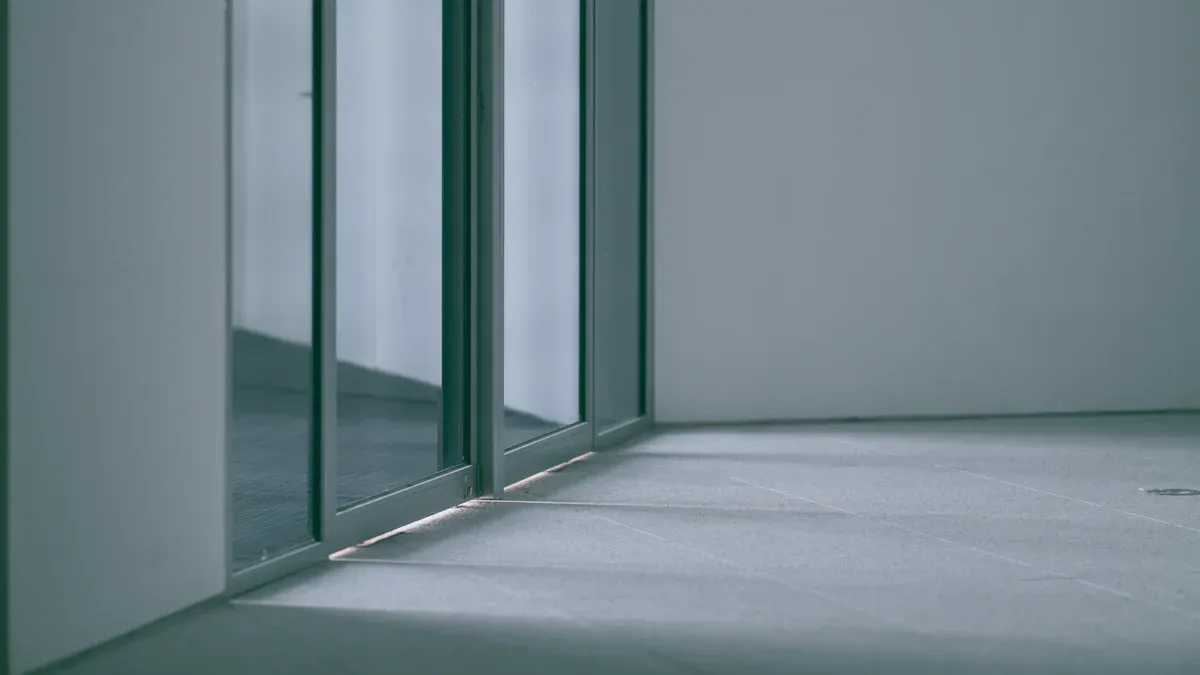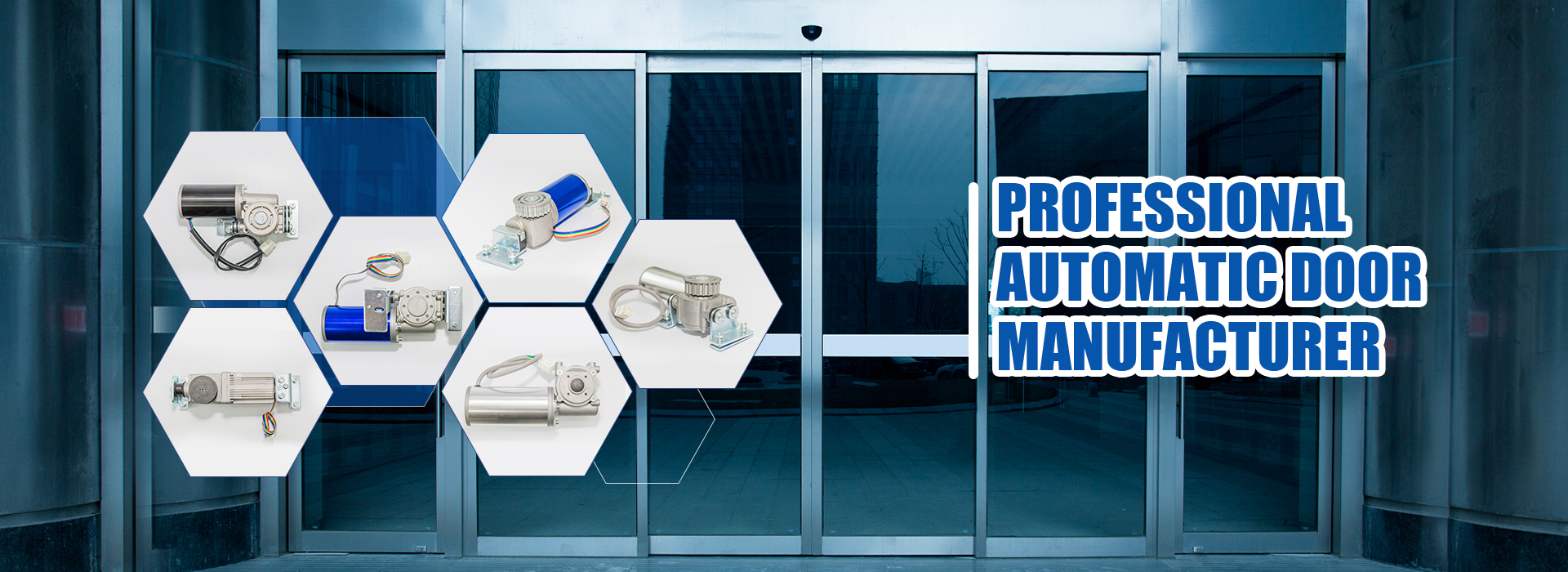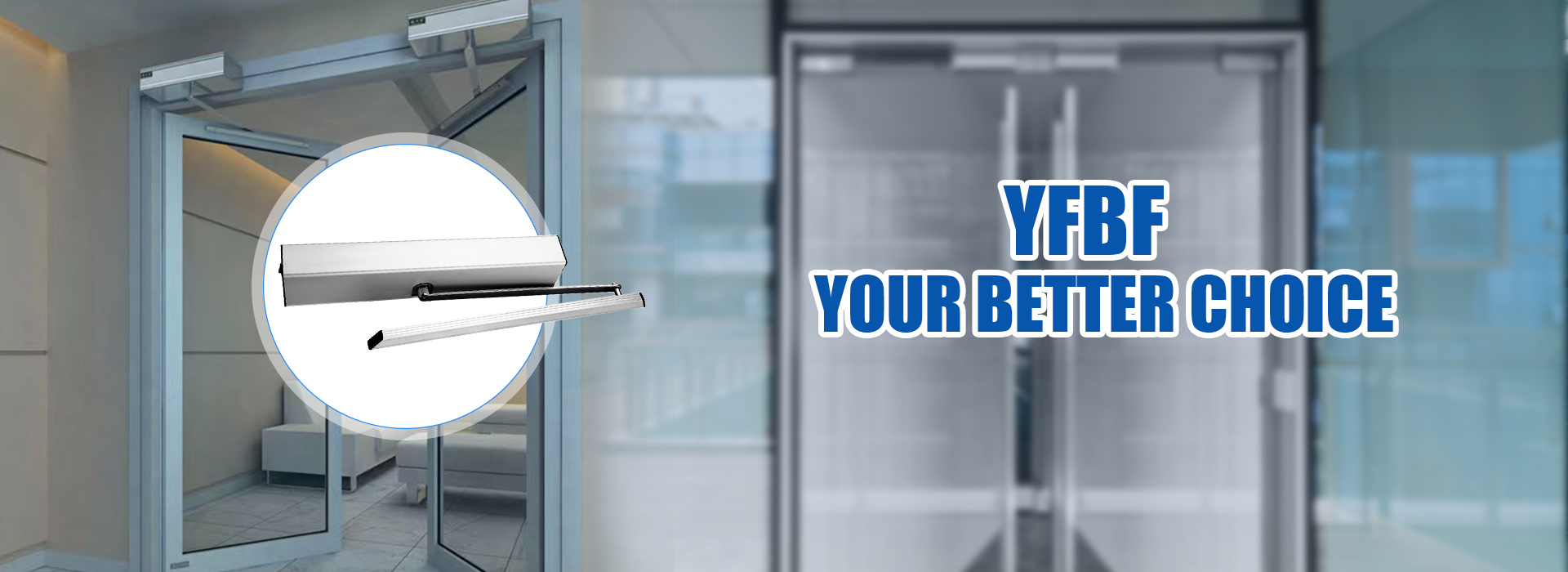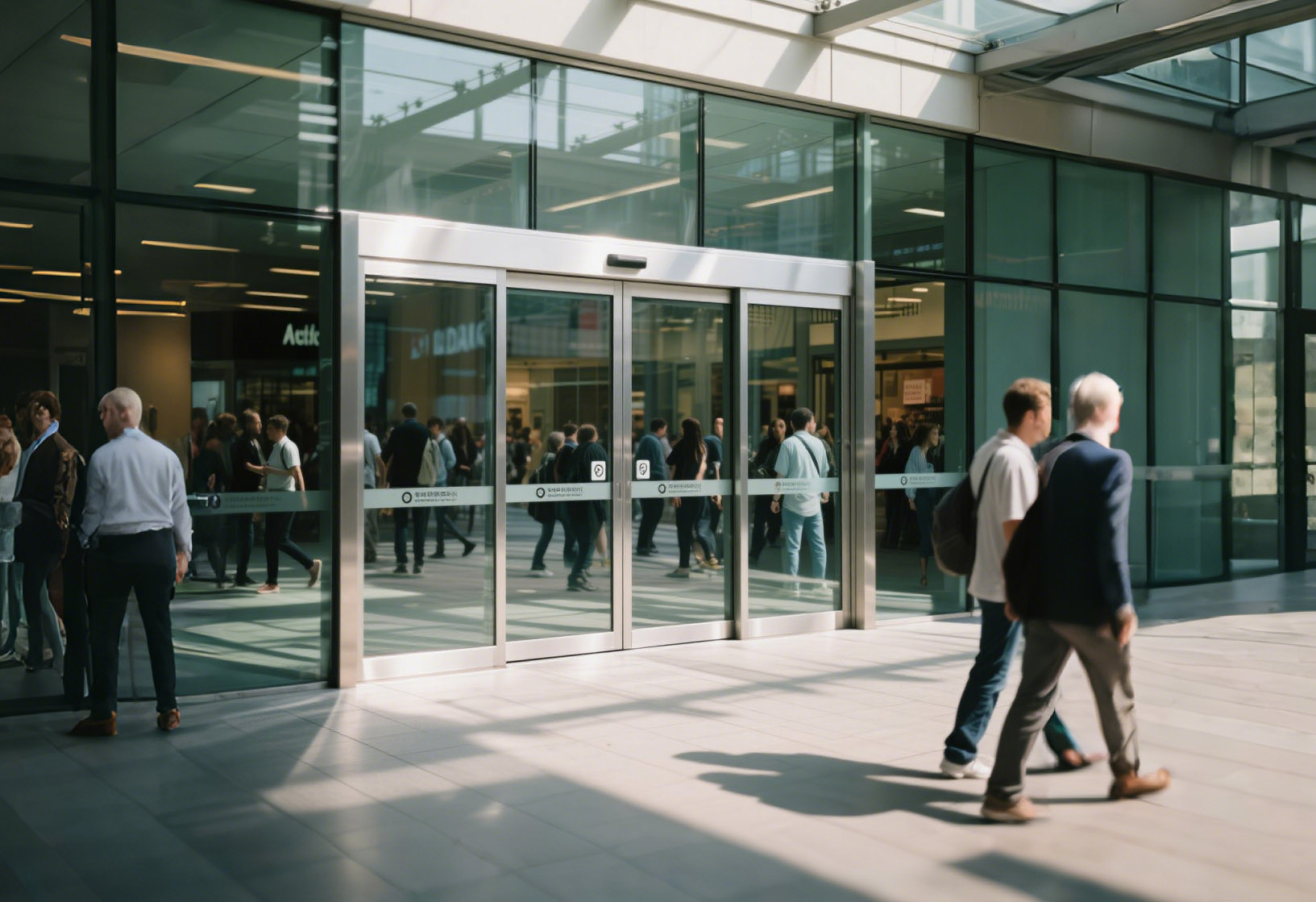Automatic Sliding Door Operators help businesses save energy and cut costs. Reports show that these doors open only when needed, which keeps heating and cooling bills low. Many hotels, malls, and hospitals choose them for their smooth, quiet operation and smart features that fit modern building needs.
Key Takeaways
- Automatic sliding door operators save energy by opening only when needed, which lowers heating and cooling costs and keeps indoor spaces comfortable.
- These doors improve accessibility and convenience for all users, including people with disabilities, while enhancing hygiene through touchless entry.
- Though the upfront cost can be significant, automatic sliding doors offer long-term savings, easy maintenance, and smart features that boost security and efficiency.
Automatic Sliding Door Operator Efficiency Gains

Energy Savings and Operational Speed
Many businesses look for ways to save energy and keep costs down. An Automatic Sliding Door Operator helps by opening and closing only when someone needs to enter or exit. This smart system keeps warm or cool air inside, so the building stays comfortable. For example, a busy retail store switched to automatic sliding doors and saw lower heating and cooling bills right away. Manual doors often get left open, which lets air escape and makes the HVAC system work harder.
Modern automatic doors use sensors to spot people coming and going. They open quickly and close right after, which means less energy gets wasted. Some models even have insulated glass and weatherstripping to keep the indoor temperature steady. These features help businesses use less energy and lower their carbon footprint.
Tip: Fast and precise door movement not only saves energy but also keeps indoor spaces more comfortable for everyone.
Reduced Manual Labor and Improved Traffic Flow
Automatic Sliding Door Operators make life easier for staff and visitors. No one needs to push or pull heavy doors, which saves effort and time. In places like hospitals, airports, and shopping malls, people move in and out all day. Automatic doors keep traffic moving smoothly, even during busy hours.
- Staff can focus on helping customers instead of opening doors.
- People carrying bags or using wheelchairs can enter without trouble.
- The risk of doors slamming shut or getting stuck goes away.
These benefits help create a safer and more welcoming space for everyone.
Automatic Sliding Door Operator Convenience Benefits
Accessibility for All Users
Automatic Sliding Door Operators make buildings easier for everyone to enter and exit. People with wheelchairs, walkers, or canes can move through doors without help. Older adults and children also find these doors simple to use. The doors open wide, giving plenty of space for anyone with a stroller or shopping cart.
Many experts say these doors follow universal design rules. They work for people with different abilities and needs. The doors open with little effort, so no one needs to push or pull. Sensors keep the doors open long enough for safe passage, which helps prevent accidents. Caregivers and family members also feel safer because the risk of falls goes down. These features help everyone feel welcome and independent in public spaces.
Note: Automatic Sliding Door Operators support safety, comfort, and independence for all visitors.
Enhanced Hygiene and Touchless Entry
Touchless entry has become very important in places like hospitals, airports, and shopping malls. Automatic Sliding Door Operators let people enter without touching door handles. This reduces the spread of germs and keeps hands clean. Many businesses choose these doors to help protect staff and visitors from illness.
The doors use sensors to open and close. People do not need to touch anything, which makes the building safer and more modern. Cleanliness and health matter to everyone, so touchless entry is a smart choice for busy public spaces.
Automatic Sliding Door Operator Cost vs. Value
Upfront Investment and Maintenance Costs
When businesses consider new entry systems, cost is always a big factor. Automatic sliding doors offer a balance between price and performance. The upfront investment covers hardware, installation, and future maintenance. Here’s a quick look at how automatic sliding doors compare to revolving doors:
| Cost Category | Automatic Sliding Doors | Revolving Doors |
|---|---|---|
| Upfront Hardware Cost | $2,000 – $10,000+ (low to high-end) | Higher than sliding doors (exact range N/A) |
| Installation Fees | $500 – $1,500 (basic) | $1,500 – $3,500 (complex installation) |
| Annual Maintenance | $300 – $600 | Higher due to complexity (exact range N/A) |
| Emergency Repairs | Can exceed $1,000 | Generally more costly due to mechanical complexity |
Revolving doors usually cost more to buy and install. Their complex design means higher maintenance and repair bills. Automatic sliding doors, on the other hand, have lower installation and upkeep costs. Many businesses choose them because they are reliable and budget-friendly.
Note: Choosing an Automatic Sliding Door Operator can help businesses save money on both installation and long-term care.
Long-Term Savings and ROI
Many business owners want to know if automatic doors pay off in the long run. The answer is yes. These doors offer several ways to save money and add value over time:
- Smart technology and IoT features help reduce energy loss, which lowers heating and cooling bills.
- Automatic doors help conserve energy, so businesses spend less on daily operations.
- Meeting accessibility rules keeps companies from facing fines and can even boost property value.
- Customers enjoy smooth entry and exit, which can lead to more visits and higher sales.
- As cities grow and more buildings use smart tech, the demand for automatic doors keeps rising. This trend supports strong long-term value.
- Even though the first payment may seem high, the benefits—like energy savings, better security, improved hygiene, and easy access—make the investment worthwhile.
A popular Automatic Sliding Door Operator fits well in hotels, airports, hospitals, shopping malls, and office buildings. It runs quietly, stays safe and stable, and works efficiently for years. Many businesses see lower costs and happier customers after making the switch.
Automatic Sliding Door Operator Potential Drawbacks
Common Issues and How to Mitigate Them
Sometimes, automatic doors may not work as expected. Sensors might miss a person or open too slowly. Power outages can stop the doors from working. People may worry about safety if the doors close too quickly. These problems can cause frustration for visitors.
Building managers can solve most issues with regular checks. They should clean the sensors and test the doors often. Many companies offer support and quick repairs. Staff can learn how to use the manual override in case of power loss. Good training helps everyone feel safe and confident.
Tip: Schedule routine maintenance to keep doors running smoothly and avoid surprises.
Suitability for Different Environments
Not every place needs an automatic sliding door. Small shops with low foot traffic may not see much benefit. In very cold or windy areas, doors might let in drafts if not installed well. Some historic buildings may have rules about changing the entrance.
Large spaces like airports, malls, and hospitals get the most value. These places see many people each day. Automatic doors help keep traffic moving and make entry easy for everyone. Before choosing a door, owners should think about their building’s needs and local rules.
Note: The right door system depends on the size, style, and use of the building.
Automatic Sliding Door Operator 2025-Specific Considerations
Technological Advancements
Technology keeps changing how people use doors in public spaces. In 2025, smart features make automatic doors even more helpful. Many companies now use artificial intelligence to predict when people will enter or leave. This helps the doors open only when needed, saving energy and making buildings more comfortable. Some doors use sensors that learn from daily traffic patterns. These sensors help the doors move faster during busy times and slow down when it is quiet.
People also see more doors with biometric security, like facial recognition or fingerprint scanning. This makes buildings safer and keeps out unwanted visitors. Many new doors connect to the Internet of Things (IoT). Building managers can check door status, get alerts, and even control doors from their phones. These smart features help save money on repairs because the system can warn about problems before they get worse.
Here is a quick look at what is driving these changes:
- AI and machine learning for smarter, energy-saving operation
- Biometric access for better security
- IoT connectivity for remote monitoring and control
- Use of sustainable materials and better insulation
- Market growth fueled by demand for touchless entry and smart buildings
| Aspect | Statistic or Trend |
|---|---|
| Market Growth Rate (Asia Pacific) | Projected CAGR of 6.2% over the forecast period |
| Market Growth Rate (North America) | Projected CAGR of 4.8% over the forecast period |
| Key Innovations | Advanced sensors, IoT, energy-saving features |
Compliance with New Standards and Trends
New rules and building codes shape how companies choose door systems. In 2025, many countries require doors to save energy and keep people safe. Doors now use insulated glass and special frames to stop heat from escaping. This helps buildings meet energy laws and lowers heating and cooling bills.
Safety and accessibility matter more than ever. Many doors use motion sensors that only open when someone is close. This keeps indoor air inside and helps people with disabilities move easily. Some doors even have air curtains to block drafts and keep the building clean.
Modern doors also connect with building management systems. This lets managers watch doors in real time and link them to security alarms or emergency plans. In Europe, rules like EN 16005 push companies to use doors with strong safety features. In Germany and other places, strict laws make sure doors are easy for everyone to use.
- Insulated and Low-E glass for energy savings
- Adaptive sensors for better safety and less energy waste
- Touchless controls for hygiene and accessibility
- RFID and facial recognition for secure entry
- Integration with building automation for real-time monitoring
Tip: Choosing doors that meet new standards helps businesses stay ahead and keeps everyone safe and comfortable.
Automatic Sliding Door Operators offer real value in 2025. They help businesses save energy, improve access, and keep up with smart building trends. The market keeps growing fast, as shown below:
| Aspect | 2025 Value |
|---|---|
| Market Size | USD 2.74 billion |
| Sliding Door Share | 84.7% |
| CAGR (2025-2032) | 5.3% |
Owners should review their needs to find the best fit.
FAQ
How does an Automatic Sliding Door Operator work?
A motor drives a belt that moves the door open or closed. Sensors detect people and trigger the door to operate automatically.
Where can businesses install Automatic Sliding Door Operators?
Hotels, airports, hospitals, shopping malls, and office buildings use these operators. They fit most commercial spaces that need easy, touchless entry.
Are Automatic Sliding Door Operators safe for children and seniors?
Yes. The sensors and safety features help prevent accidents. The doors open and close smoothly, making entry safe for everyone.
Post time: Jun-24-2025




